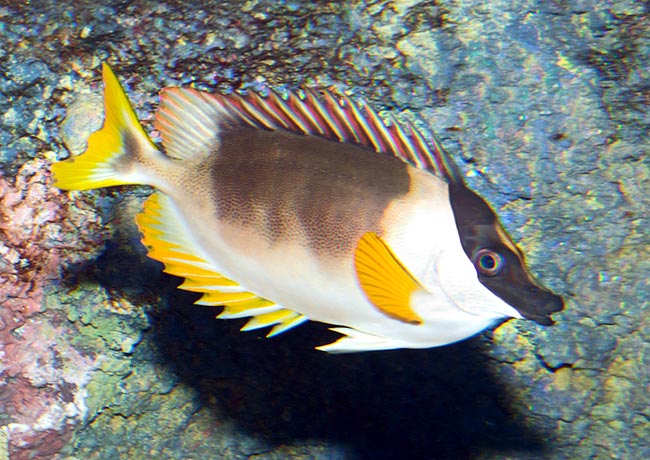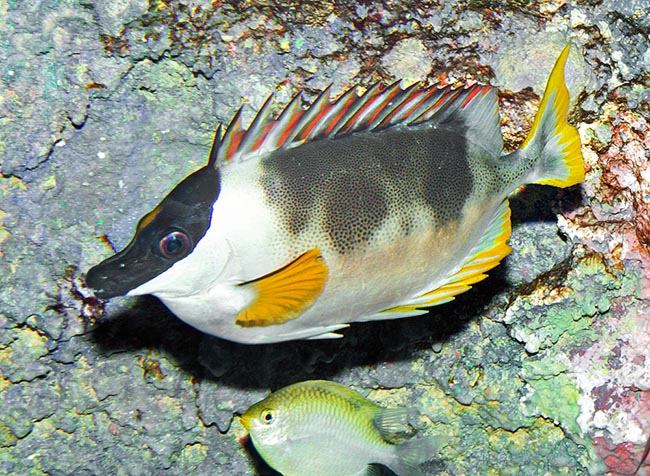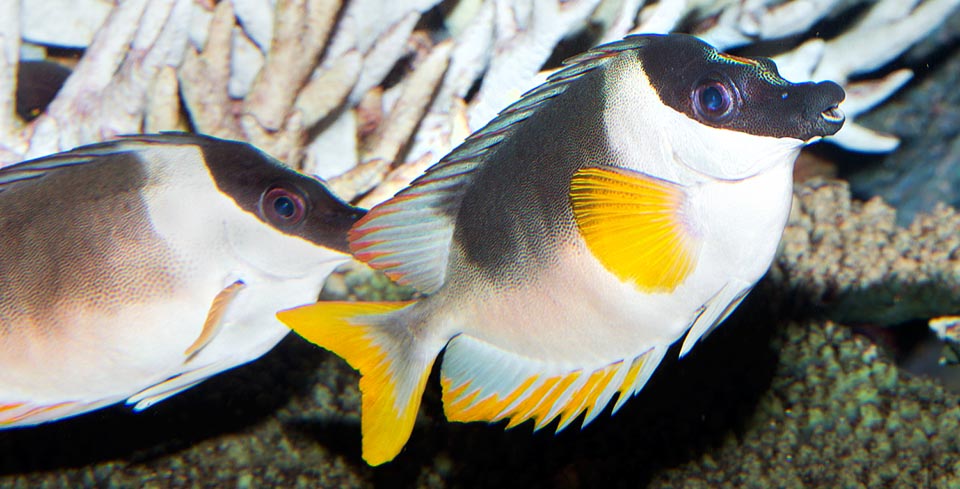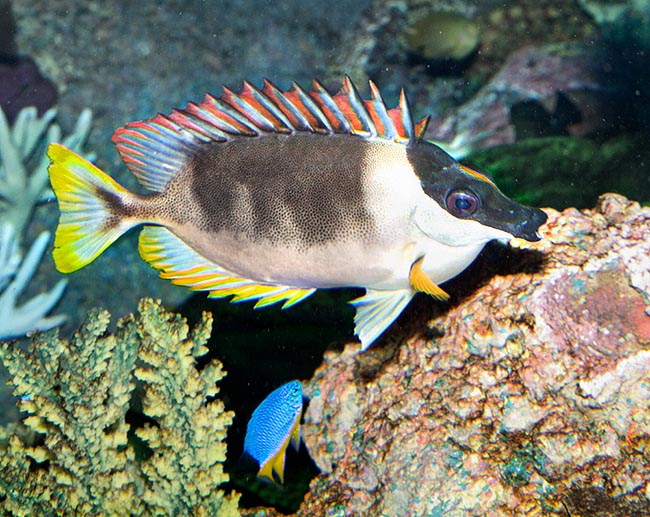Family : Siganidae

Text © Giuseppe Mazza

English translation by Mario Beltramini

Siganus magnificus has a relatively small diffusion area in South-East Asia © Giuseppe Mazza
Animals often called rabbitfishes, due to the contour of the head with prominent lips and small interlocking teeth for grazing in the seagrass meadows.
They are marine fishes or of brackish water at the most, rarely exceeding the 40 cm of length and that may have an important rôle in the human feeding.
The etymology of the genus Siganus comes from the Arab word “sidjan”, a name gathered by Forsskål in his travel towards the East and assigned by him to the Siganus rivulatus Forsskål & Niebuhr, 1775.
The specific name magnificus, in Latin simply means magnificent, grandiose, splendid, due to the unusual and elegant combination of colours.

It rarely exceeds the 20 cm and it is not easy to see camouflaged as it is in its habitat © Giuseppe Mazza
The Siganus magnificus has a relatively small diffusioon area in the tropical waters of Eastern Indian Ocean and the nearby waters of Western Pacific. Basically, we find it only in the Mergui Archipelago in Burma, in the Surin and Similan Islands in Thailand, the Andaman Islands in India and in Indonesia, where however do not exist precise reports also because it is matter of modest sized fishes, difficult to observe, living mainly isolated or in pair.
Ecology-Habitat
They usually swim in shallow waters, not beyond the depth of 20 m, among the madreporic formations.
Morpho-physiology
Colour apart, it is very close to the best known and diffused Siganus vulpinus and also here the snout is more foxy than rabbity, elongated and well different, for instance from that of the Double-barred spinefoot (Siganus virgatus). The oval body, flat on the sides, rarely exceeds the 20 cm, with a record of 24 cm. The long dorsal fin has 13 spiny rays and 10 unarmed, whilst the anal has 7 spiny and 9 soft rays.

Lives alone or in pair, eating seaweeds, aquatic plants and plankton, but not ignoring small crustaceans and molluscs it finds among corals or in the submerged prairies © Giuseppe Mazza
The large pectoral fins have 16 soft rays and the ventral 2 spiny rays and 3 unarmed. The tail is forked. As often occurs in the world of the Siganidae, the spiny rays are imbued with a poisonous mucus. Characteristic of the species is the dark ocular band that, interrupted by a yellow stretch on the front, goes from the snout to the first dorsal spiny ray.

The fins spine, emphasized by colour, are imbued with poison. Presently is not endangered © Giuseppe Mazza
The pectoral fins are yellow, as well as the border of the caudal and the anal ones, whilst the ventral fins are white and the dorsal, when raising, shows as warning to the predators, a reddish membrane among the rays.
Ethology-Reproductive Biology
The Siganus magnificus nourishes mainly of seaweeds, aquatic plants and plankton, without ignoring small crustaceans and molluscs it finds among the corals and in the submerged prairies.
The fecundated eggs are entrusted to the currents and the juveniles, going back to the reef, grow up sheltered by the corals.
The resilience is quite good, seen that theoretically 15 months are sufficient for doubling the populations decimated by the events, and the vulnerability index marks only 23 on a scale of 100. However, it is a species to be kept under observation due to the limited diffusion and due to the fact that in some zones a decrease of the 20% of individuals has been noted over three generations.
Synonyms
Lo magnificus Burgess, 1977.
→ For general information about fishes please click here.
